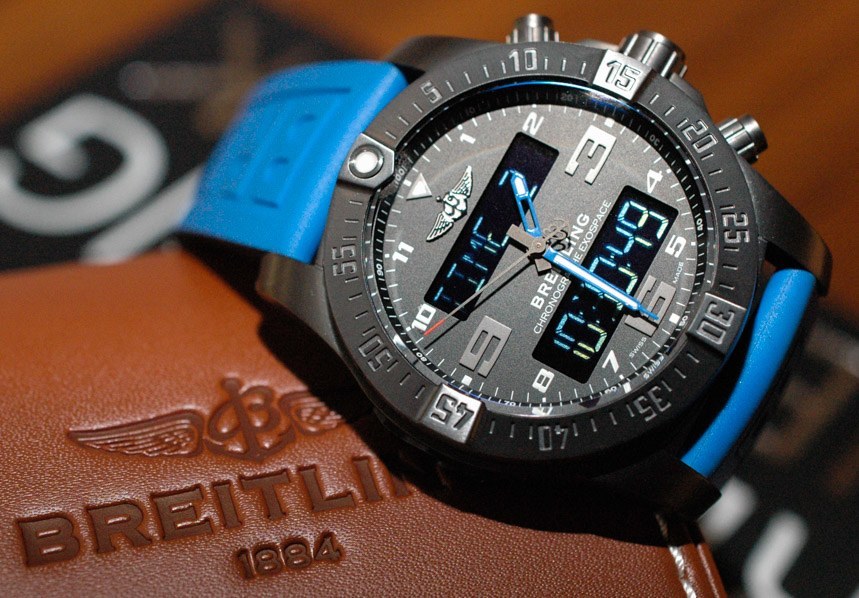
It was during Baselworld 2015 that we originally debuted Breitling‘s then-prototype connected device, the Breitling B55 Connected Watch here. Several short months later, Breitling has modified the original concept in some noticeable ways, and allowed us to be among the first to go hands-on with the finalized version ready to hit the stores. We are here to tell you all that we have learned about the exact specifics and the hidden functionalities of this high-tech blend of quartz timekeeping and wireless connectivity.
The Breitling Exospace B55 Connected watch runs on a “SuperQuartz” movement – which we’ll get into later on – and is designed more as a connected timepiece, than a straightforward smart watch. Connected versus smart watch – what’s that all about? Well, these are relatively new categories and you must not feel bad if you are still confused by them. A smartwatch, like the Apple Watch or the TAG Heuer Connected (hands-on here) use a large digital screen in lieu of analog hands to display detailed information and complex screens. A connected watch, on the other hand, communicates with your phone, sending and receiving data including notifications, health tracking and, as we’ll see in case of the Breitling Exospace B55, to enable you to control your watch using an app on your phone – but it remains primarily a watch more than a computer.
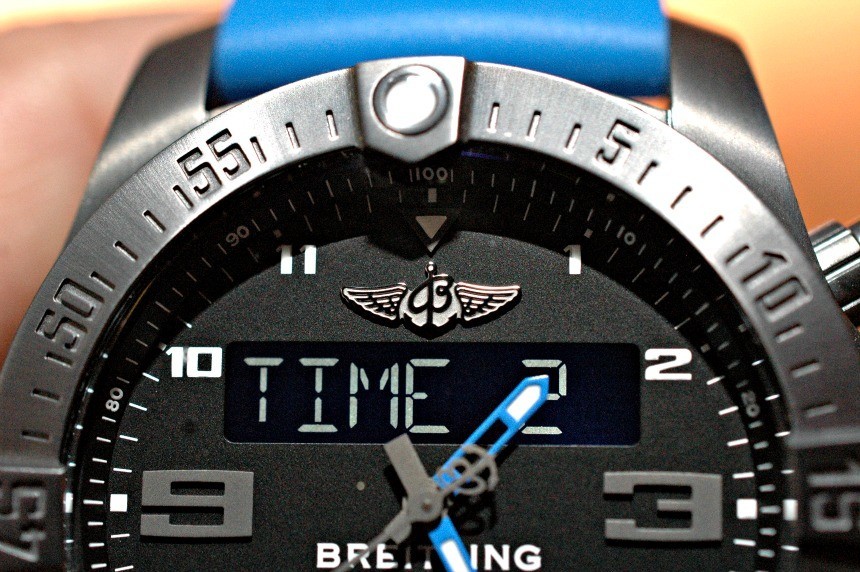
So how does the Breitling Exospace B55 Connected fit into the picture? The Breitling Exospace B55 Connected watch is an evolution of the Breitling Cockpit B50, and it runs on a super nerdy and indeed genuinely impressive, in-house made, high-tech “SuperQuartz” movement by Breitling that you can learn all about here. The “SuperQuartz” inside the B50 and B55 allows for an analogue display of the time and two additional displays on the dial, and is powered by a rechargeable, lithium-ion battery. The Breitling Exospace B55 Connected carries all this and tries to take it to the next level by connecting this already pretty smart watch to your smartphone for added levels of functionality.
At the launch of the watch, we were shown demos of the watch and its connectivity by Breitling Vice-President Jean-Paul Girardin. As Girardin demos some of the functions of the watch – including my favorite, which is the dual time zone setting allowing you to swap the watch’s time back and forth between two time zones with a touch of a button – it is clear that the company’s engineers had travelers and, of course, pilots in mind. I appreciate the simplicity and, to quote Girardin, “it is pure logic to use the new Bluetooth connected technology to improve the user-friendliness and, of course, functionality of the product.”
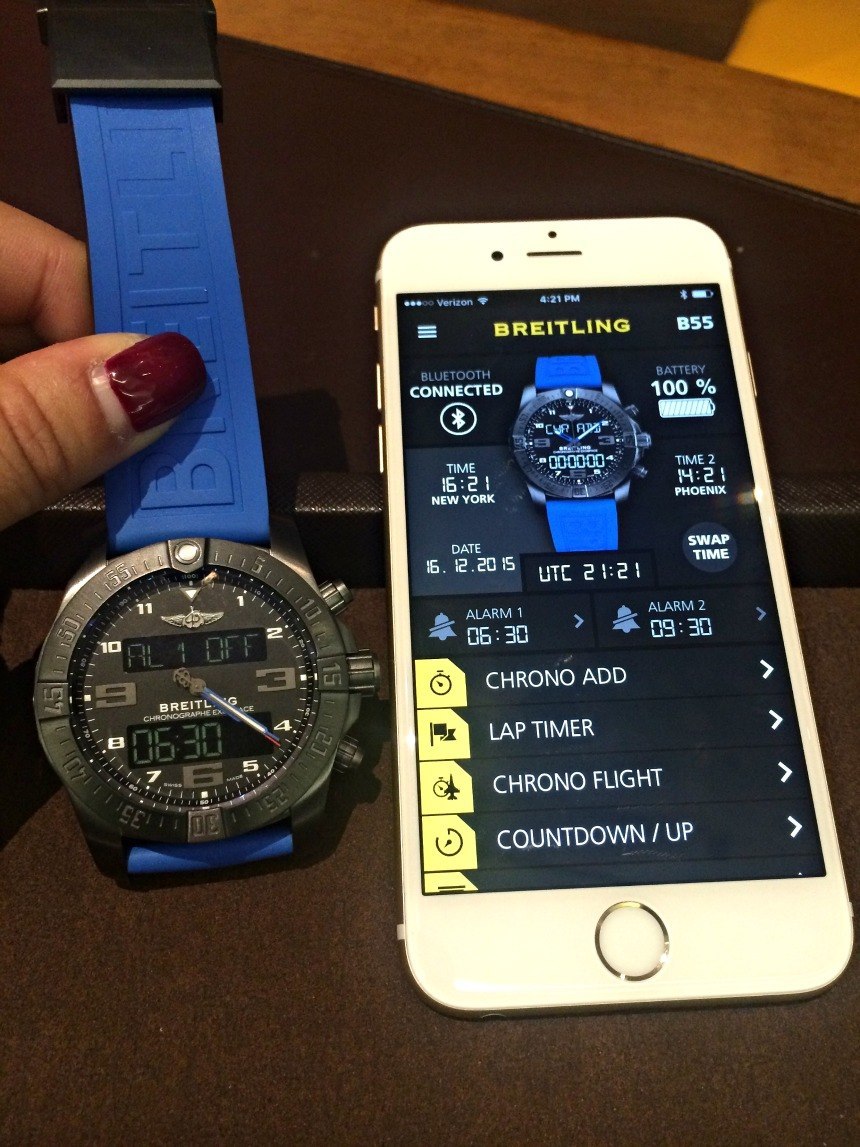
Speaking of pilots, also on-site for the launch festivities was Breitling brand ambassador and former NASA astronaut Mark Kelly (whom we interviewed about watches here) whose personal excitement for the new watch was palpable. Interestingly, his favorite feature of the watch was actually the “Tilt Function” dial backlight which he explained was extremely useful particularly for fighter pilots and other members of the armed forces. The way it works is that the wearer can activate the backlight with a quick tip of the wrist down past 35 degrees.
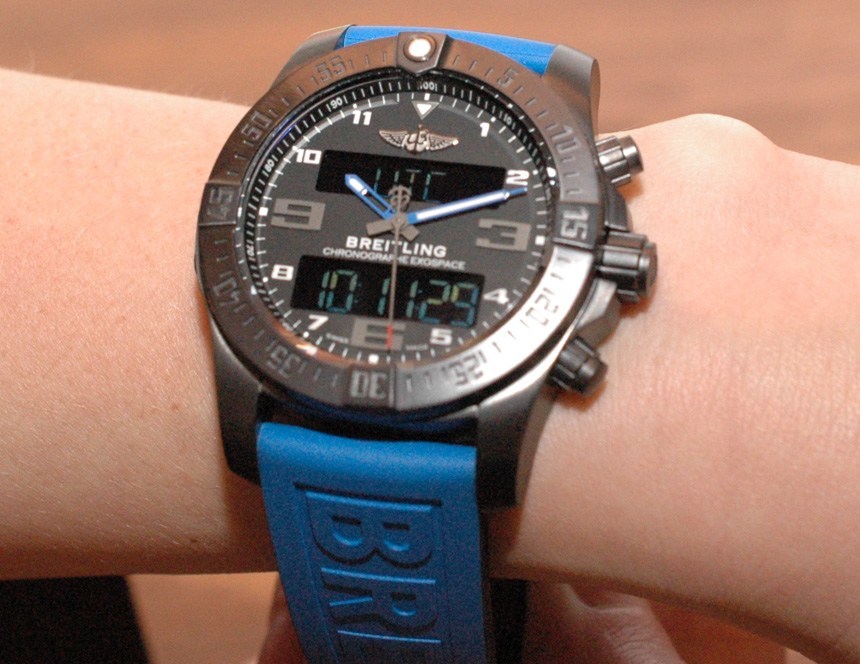
“Being able to check the time without fumbling around for a light in a dark cockpit and taking your hands off of the controls is key,” says Kelly. “Also for fighter pilots, being able to read the time clearly and at any given moment goes way beyond the need to know what time it is, but rather is helpful to calculate distances and range in critical situations. Having a watch that can help make that process easier and faster is very important.”
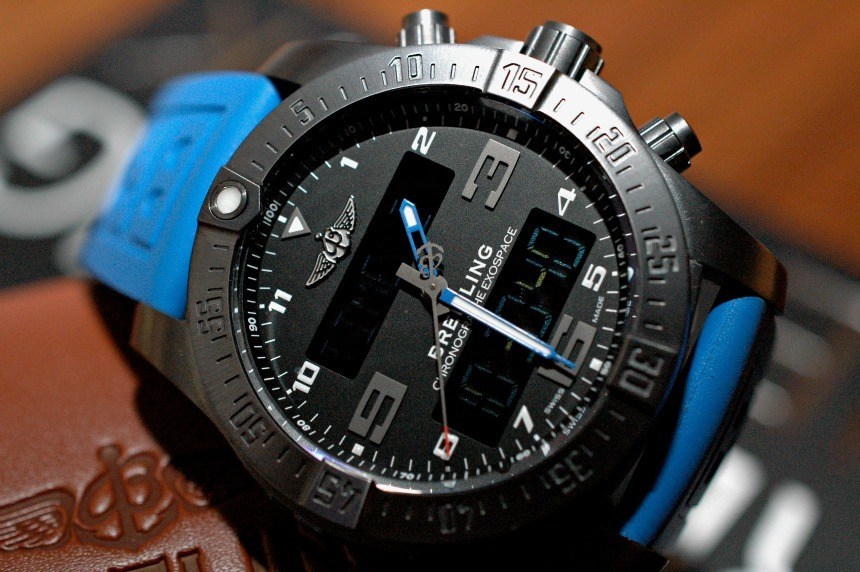
Both men see this new foray into the smart watch game a key move for Breitling who has historic ties to the advancement of aviation technology in mechanical wristwatches. In addition to the new in-house-made SuperQuartz movement, the app itself was also developed in-house at their manufacture in Switzerland.
The full list of features is of course much longer, as it includes: the Breitling Caliber B55 in-house made, COSC certified, thermocompensated SuperQuartz movement; analog and two backlit digital time indications including a second time zone display that can be swapped with the hands by the press of a button; perpetual calendar with week display; 7 daily alarms; 1/100th of a second chronograph; Coordinated Universal Time (UTC); Countdown/Countup (or MET Mission Elapsed Time); flight time chronograph; lap timer chronograph; electronic tachymeter; battery change indicator.
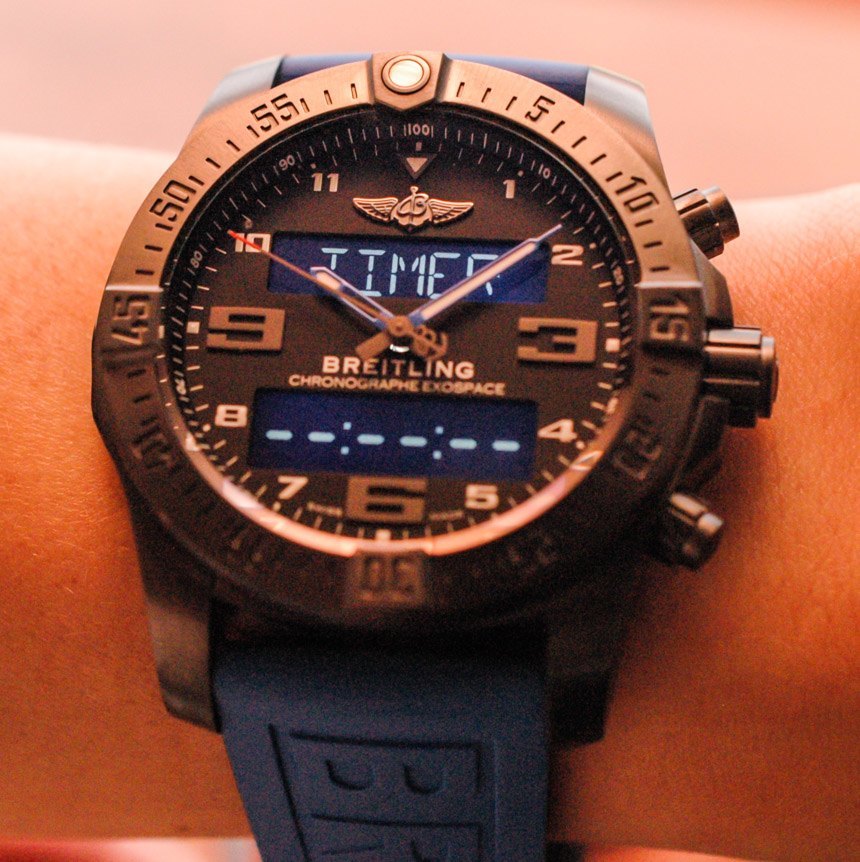
In terms of watch design, the new Breitling connected watch features a large 46mm titanium case water resistant to 100m/330ft, with a uni-directional bezel and a front sapphire crystal with anti reflective treatment on both sides. The first thing you notice besides the bright sky blue rubber strap is that the piece is surprisingly light and sleek for such a physically big watch. As a woman, my wrist is of course proportionately smaller, so even though the watch expectedly dwarfs my wrist, it is actually quite comfortable and easily wears like a smaller watch. Looking closely, it seems that the reason is that the lugs are also proportionately shorter in contrast to many large 41mm-plus watches – hence, even though the dial is large, it could reasonably fit on more wrists than others of the same diameter.
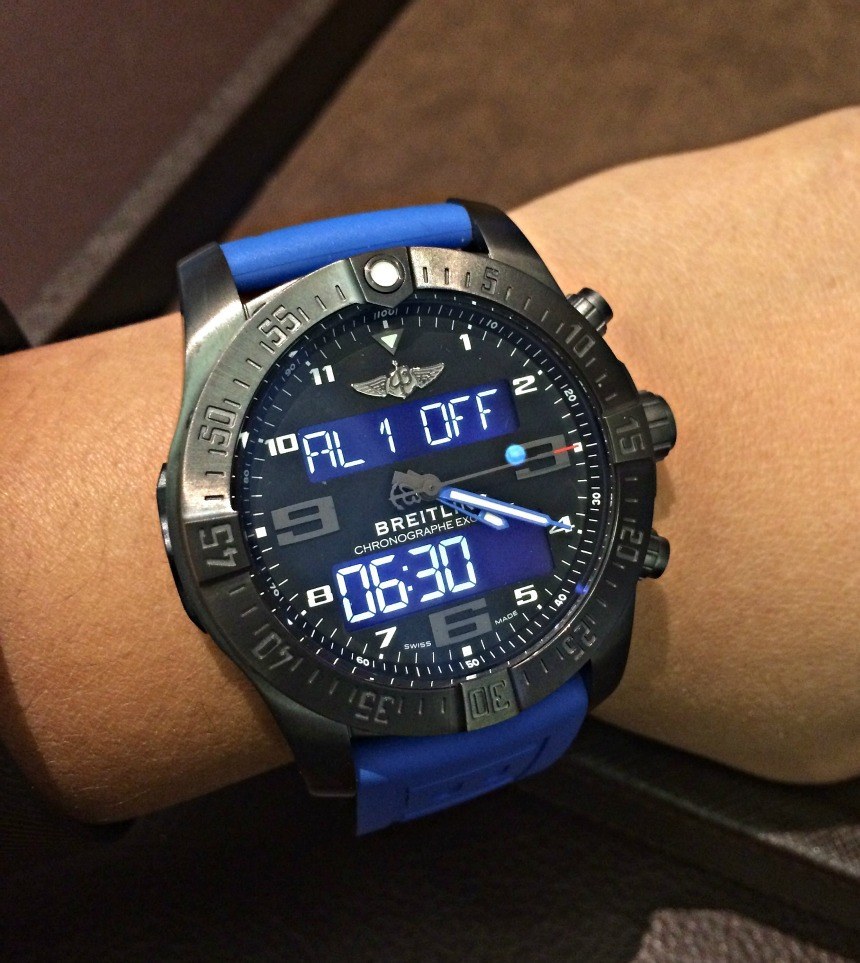
The dial features two digital, backlit displays as well as a set of centrally mounted analogue hands – a strong point of the design carried on from the B50 is that the two don’t compete with each other for the attention of the eye. Since the Basel demo piece, Breitling did a good job changing and cleaning up the face of the watch, with the dial losing the WiFi logo and the bezel now featuring the numbers in a tonal etching rather than the previous white numbering. The result is a sleeker design without sacrificing legibility. The bottom digital window displays the time and the top window provides smart technology notifications synced to your phone via bluetooth such as incoming email and caller ID notifications.
